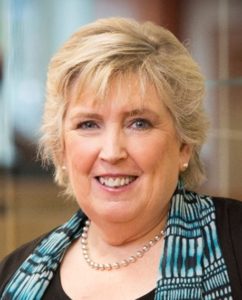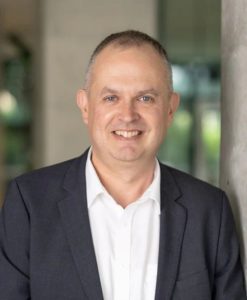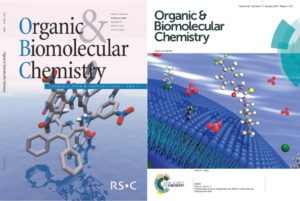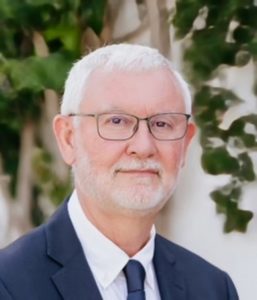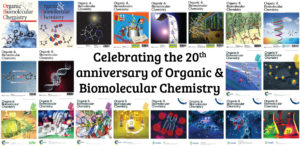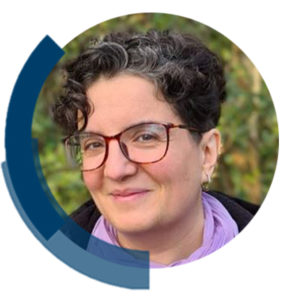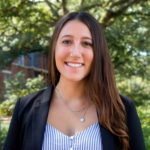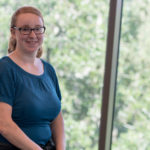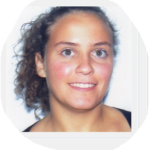2023 marks twenty years of Organic & Biomolecular Chemistry publications. As part of the celebrations, OBC has invited some of the most prominent authors across our history to give their thoughts on the last twenty years of their career alongside their predictions for the next two decades.
Our first entry to the series comes from Professor Hirokazu Tamamura at the Tokyo Medical and Dental University who first published with OBC in 2003, the journal’s first year. He has continued to support the journal with 12 articles across the years, most recently in 2021.
About Hirokazu
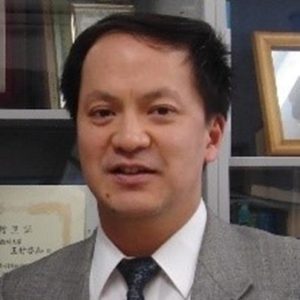
Prof Hirokazu Tamamura graduated from the Faculty of Pharmaceutical Sciences, Kyoto University in 1988 (Supervisor: Prof Haruaki Yajima), and received his Ph.D. from Kyoto University in 1995. He became an Assistant Professor of the Faculty of Pharmaceutical Sciences, Kyoto University in 1989 (Boss: Prof Nobutaka Fujii), and then a Lecturer of the Graduate School of Pharmaceutical Sciences, Kyoto University in 1997.
He became a Visiting Fellow at the National Cancer Institute/NIH, USA in 1999-2000 (Lab. Medicinal Chemistry, Boss: Dr Victor E. Marquez) before becoming an Associate Professor of the Graduate School of Pharmaceutical Sciences, Kyoto University in 2005, and then a Full Professor at the Institute of Biomaterials and Bioengineering, Tokyo Medical and Dental University (TMDU) in 2005. His research fields extend to peptide & protein chemistry, chemical biology, medicinal chemistry and organic chemistry.
Hirokazu Tamamura
Institute of Biomaterials and Bioengineering, Tokyo Medical and Dental University (TMDU), Tokyo, Japan
First OBC Paper: H. Tamamura, T. Kato, A. Otaka & N. Fujii, Synthesis of Potent β-Secretase Inhibitors Containing a Hydroxyethylamine Dipeptide Isostere and Their Structure-Activity Relationship Studies, Org. Biomol. Chem., 2003, 1, 2468-2473, DOI: 10.1039/b304842j
Most recent OBC paper: K. Tsuji, T. Ishii, T. Kobayakawa, N. Ohashi, W. Nomura & H. Tamamura, Fluorescence resonance energy transfer-based screening for protein kinase C ligands using 6-methoxynaphthalene-labeled 1,2-diacylglycerol-lactones, Org. Biomol. Chem., 2021, 19, 8264-8271, DOI: 10.1039/d1ob00814e
Favourite OBC paper: H. Tamamura, K. Hiramatsu, M. Mizumoto, S. Ueda, S. Kusano, S. Terakubo, M. Akamatsu, N. Yamamoto, J. O. Trent, Z. Wang, S. C. Peiper, H. Nakashima, A. Otaka & N. Fujii, Enhancement of the T140-based Pharmacophores Leads to the Development of More Potent and Bio-stable CXCR4 Antagonists, Org. Biomol. Chem., 2003, 1, 3663-3669, DOI: 10.1039/b306613b
How has your research developed over the last 20 years?
My research has been focused on peptide-based medicinal chemistry over the last 20 years. I started on the development of methodologies for peptide synthesis in 1988 at the Graduate School of Pharmaceutical Sciences, Kyoto University. After receiving my PhD and finishing a postdoctoral fellowship at the National Institutes of Health/National Cancer Institute (NIH/NCI), USA, my research got closer to medicinal chemistry and chemical biology, using peptides and their derivatives. As drug leads for chemotherapy of Alzheimer’s disease, we developed potent beta-secretase inhibitors based on peptide derivatives containing a mimic structure of the enzyme-substrate transition state: a hydroxyethylamine dipeptide isostere. Thus, in 2003, my first paper with OBC on the development of beta-secretase inhibitors was published1. In addition, we had research for the development of antagonists for the chemokine receptor CXCR4, which is correlated with several diseases such as HIV-1/AIDS, cancer and rheumatoid arthritis. Through structure-activity relationship studies on polyphemusin-related peptides, we developed peptidic CXCR4 antagonists, which were designated as T140 derivatives, with high CXCR4-binding affinity, low cytotoxicity and improved biostability. The lead compound, Motixafortide has been progressing through to Phase III clinical studies. In the finding of these CXCR4 antagonists, we published two consecutive papers in 2003 with OBC2,3.
In association with this research, we established a fluorescence-based assay system for CXCR4 binding of compounds using a fluorophore-labeled T140 derivative4. So far we have developed novel CXCR4 antagonists based on nonpeptides as well as cyclic pentapeptide derivatives, which we published in several journals5-10, mostly OBC5,7-10. This target receptor CXCR4 forms dimers in the cell surface because it belongs to the G protein-coupled receptor family. So we developed bivalent CXCR4 ligands with polyproline linkers to catch the dimers in cells11. These bivalent CXCR4 ligands are remarkably more potent than the corresponding monomers. In addition, trivalent CXCR4 ligands highly recognise CXCR4-expressed cells because of accumulation of ligands, which we published with OBC in 201512. The concept of multimerised peptides has been applied to HIV-1 envelope proteins related to membrane fusion, hence dimeric C34 derivatives showed much more potent anti-HIV-1 activity compared to the monomer C34 peptide13.
In my postdoctoral fellowship at NIH/NCI, I had started to develop ligands of protein kinase C (PKC) based on conformationally constrained gamma-lactone derivatives of 1,2-diacylglycerol (DAG). This led to research on the development of DAG-lactones with potent binding affinity for PKC. Initially, we had adopted a competitive assay using radio isotope tritium-labeled phorbol 12,13-dibutyrate to evaluate PKC-binding activity of synthesised DAG-lactones. But from the point of view of environmental health and safety, radio isotope-based screening has been replaced with fluorescene-based screening. Therefore, we developed a fluorescence resonance energy transfer (FRET)-based screening method for PKC ligands, which we published with OBC in 20214. It was an honour that this paper was chosen as the Inside Front Cover of the issue. Taken together my research has focused on medicinal chemistry and chemical biology using peptides, their derivatives and other functional molecules over the last two decades.
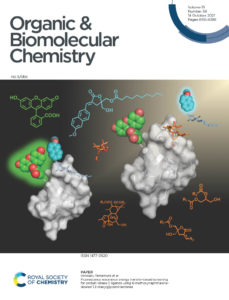
How has the field of Medicinal Chemistry changed over the last 2 decades?
Two decades ago, it was common sense that drugs were mostly low molecular weight (small-size) compounds. Through the progress of organic and synthetic chemistry, small-size drugs based on synthesised compounds have been conventionally developed against several diseases. Small molecules have some useful advantages including oral availability and low immunogenicity but serious drawbacks such as low specificity and high possibility of side effects. In this century, high molecular weight biologics (large-size molecules) including human monoclonal antibodies have been developed. Macromolecules have some merits such as high specificity and low possibility of side effects but critical shortages containing low applicability and possible immunogenicity. Accordingly, both small- and large-size drugs have their mutual advantages and drawbacks. In addition, it has been noticed that there is an important drug-like chemical space in the mid-size region between small- and large-size regions. Middle-size molecules, which are categorised between small- and large-size molecules and designated as mid-size drugs, might avoid drawbacks but contain the above advantages possessed by small- and large-size molecules. Therefore, mid-size drugs are ideal as new drug modalities, which encompasses peptides and their derivatives because of their location in this middle-size region.
Small-size drugs can recognise small regions on targeted proteins and usually bind to active centres of enzymes and pockets of receptors. The interface between the drugs and the targeted proteins is relatively narrow. Recently, the number of newly found proteins relevant to several diseases is decreasing since the whole human genome was disclosed in 2003/04. Thus, it has been difficult to find first-in-class drugs (brand-name drugs), which have novel action mechanisms that give new therapeutic approaches to treat diseases. Generic drugs, which can be presented for sale if the patent protection for a brand-name drug expires, or next-in-drugs, which have similar action mechanisms to existing drugs, have come to the forefront as small-size drugs. The concept of molecular target drugs, which bind to only specific molecules relevant to objective diseases and inhibit their functions has come to the fore over the last 20 years. Large-size drugs including human monoclonal antibodies can recognise broad regions on targeted proteins and usually bind to extracellular regions on cell surface receptors. The interface between the drugs and the targeted proteins is relatively expansive. Due to the expansive interface, large-size drugs can specifically recognise targeted proteins and achieve inhibition of protein-protein interaction, hence reducing off-target binding and side effects.
Mid-size drugs containing mostly peptides and their derivatives can have these broad interface regions with targeted proteins, the same as large-size drugs. In addition, mid-size drugs such as peptide derivatives might penetrate cell membranes if the conformation is constrained, therefore can target not only extracellular regions on cell surface receptors but also molecules inside of cells. Accordingly, mid-size drugs can target protein-protein interaction as well as active centres of enzymes and pockets of receptors. They are the current focus for development of next generation drugs. Altogether, the field of medicinal chemistry has been much changed over the last two decades, with medicinal chemists drawing attention to these mid-size drugs.
Where do you see the challenges being for the Medicinal Chemistry field over the next 20 years?
I think in the next two decades the field of medicinal chemistry will have been changed even more. In the design of small-size and mid-size drugs, computer calculation and artificial intelligence (AI) will be applied to a greater extent. There are still meaningful targets for small-size drug development, such as the central nervous system along with virus-related diseases including emerging and re-emerging infectious diseases. Currently these drugs are designed based on the structures of the lead compounds complexed with their targeted proteins determined by the X-ray structure analysis and/or NMR analysis accompanied with docking simulations. Recently, cryo-electron microscopy (cyro-EM) has been used for structural analysis with great success. In the future, cryo-EM will be used for more structure analysis and other spectroscopies might be adopted. Even though the practical structures of the lead compounds bound to the targeted proteins sometimes are not discoverable, computer calculation and AI can produce the plausible structures. These techniques are now already useful for the design of potent drugs and will advance more in the future, to much greater levels. Based on bioinformatics, including genome information and chemoinformatics of libraries, AI drug discovery will advance more and more with application of big data of lead compounds and in silico screening. AI and robotics, in which data from each working step can be obtained by the robots’ sensors and then judged by the AI to make progress towards the next steps, will also be developed in the near future.
Peptides and new drug modalities will also become more prominent, especially cyclic peptide derivatives, which possess many advantages as drug candidates. Antibody drug conjugates (ADCs) are ideal compounds, which are conjugates of monoclonal antibodies and small drugs tethered by linkers. In ADCs, the monoclonal antibody can specifically recognise targeted extracellular regions on cell surface receptors while the small drug is then able to reach intracellular target molecules to inhibit their functions. Many ADCs will be developed, mainly for the application for cancer chemotherapy.
An alternative to drugs is chemical protein knockdown. In this strategy, molecules containing ligands of targeted proteins and E3 ligase are synthesised to attack the targeted protein and induce degradation of them by the ubiquitin-proteasome system in vivo, based on specific and non-genetic IAP-dependent protein eraser (SNIPER), proteolysis targeting chimeras (PROTAC) and other similar mechanisms. These molecules can access undruggable targets, which cannot be bound by small size drugs. In the future, I think chemical protein knockdown will be applied to many targets.
Nucleic acid medicine, another drug modality, is now very popular. RNA-dependent polymerease RNA inhibitors and mRNA vaccines have been useful for treatment and prevention of COVID-19 respectively. Thus, these drugs will be expected for the treatment and prevention of new infectious diseases. Research on other gene therapies involving small interfering RNA (siRNA) and antisense nucleotides along with genome editing will become a hot area. Concomitantly, development of vectors for nucleic acid and genome medicine will be actively pursued. In addition, regenerative medicine including cell therapy will make progress in close association with embryonic (ES cells) and induced pluripotent stem cells (iPS cells). Chimeric antigen receptor-therapy (CAR-T) will also be another next generation therapy for cancer. Altogether, I believe various drug modalities will be utilised to have the right drugs for the right targets in the future.
Check out the other entries in our blog series here!
| 1. H. Tamamura, T. Kato, A. Otaka & N. Fujii, Synthesis of Potent β-Secretase Inhibitors Containing a Hydroxyethylamine Dipeptide Isostere and Their Structure-Activity Relationship Studies, Org. Biomol. Chem., 2003, 1, 2468-2473, DOI: 10.1039/b304842j |
8. H. Tamamura, H. Tsutsumi, H. Masuno, S. Mizokami, K. Hiramatsu, Z. Wang, J. O. Trent, H. Nakashima, N. Yamamoto, S. C. Peiper & N. Fujii, Development of a Linear Type of Low Molecular Weight CXCR4 Antagonists Based on T140 Analogs, Org. Biomol. Chem., 2006, 4, 2354-2357, DOI: 10.1039/b603818b |
| 2. H. Tamamura, K. Hiramatsu, S. Kusano, S. Terakubo, N. Yamamoto, J. O. Trent, Z. Wang, S. C. Peiper, H. Nakashima, A. Otaka & N. Fujii, Synthesis of potent CXCR4 inhibitors possessing low cytotoxicity and improved biostability based on T140 derivatives, Org. Biomol. Chem., 2003, 1, 3656-3662, DOI:10.1039/b306473p |
9. T. Tanaka, H. Tsutsumi, W. Nomura, Y. Tanabe, N. Ohashi, A. Esaka, C. Ochiai, J. Sato, K. Itotani, T. Murakami, K. Ohba, N. Yamamoto, N. Fujii & H. Tamamura, Structure-activity Relationship Study of CXCR4 Antagonists Bearing the Cyclic Pentapeptide Scaffold: Identification of the New Pharmacophore, Org. Biomol. Chem., 2008, 6, 4374-4377, DOI: 10.1039/b812029c |
| 3. H. Tamamura, K. Hiramatsu, M. Mizumoto, S. Ueda, S. Kusano, S. Terakubo, M. Akamatsu, N. Yamamoto, J. O. Trent, Z. Wang, S. C. Peiper, H. Nakashima, A. Otaka & N. Fujii, Enhancement of the T140-based Pharmacophores Leads to the Development of More Potent and Bio-stable CXCR4 Antagonists, Org. Biomol. Chem., 2003, 1, 3663-3669, DOI: 10.1039/b306613b |
10. T. Tanaka, W. Nomura, T. Narumi, A. Esaka, S. Oishi, N. Ohashi, K. Itotani, B. J. Evans, Z. Wang, S. C. Peiper, N. Fujii & H. Tamamura, Structure-activity Relationship Study on Artificial CXCR4 Ligands Possessing the Cyclic Pentapeptide Scaffold: The Exploration of Amino Acid Residues of Pentapeptides by Substitutions of Several Aromatic Amino Acids, Org. Biomol. Chem., 2009, 7, 3805-3809, DOI: 10.1039/b908286g |
| 4. W. Nomura, Y. Tanabe, H. Tsutsumi, T. Tanaka, K. Ohba, N. Yamamoto & H. Tamamura, Fluorophore Labeling Enables Imaging and Evaluation of Specific CXCR4-Ligand Interaction at the Cell Membrane for Fluorescence-Based Screening, Bioconjugate Chem., 2008, 19, 1917-1920, DOI: 10.1021/bc800216p |
11. T. Tanaka, W. Nomura, T. Narumi, A. Masuda & H. Tamamura, Bivalent Ligands of CXCR4 with Rigid Linkers for Elucidation of the Dimerization State in Cells, J. Am. Chem. Soc. (Commun.), 2010, 132, 15899-15901, DOI: 10.1021/ja107447w |
| 5. H. Tamamura, M. Mizumoto, K. Hiramatsu, S. Kusano, S. Terakubo, N. Yamamoto, J. O. Trent, Z. Wang, S. C. Peiper, H. Nakashima, A. Otaka & N. Fujii, Topochemical Exploration of Potent Compounds Using Retro-Enantiomer Libraries of Cyclic Pentapeptides, Org. Biomol. Chem., 2004, 2, 1255-1257, DOI: 10.1039/b401485p |
12. W. Nomura, T. Koseki, N. Ohashi, T. Mizuguchi & H. Tamamura, Trivalent Ligands for CXCR4 Bearing Polyproline Linkers Show Specific Recognition for Cells with Increased CXCR4 Expression, Org. Biomol. Chem., 2015, 13, 8734-8739, DOI: 10.1039/c5ob00891c |
| 6. H. Tamamura, K. Hiramatsu, S. Ueda, Z. Wang, S. Kusano, S. Terakubo, J. O. Trent, S. C. Peiper, N. Yamamoto, H. Nakashima, A. Otaka & N. Fujii, Stereoselective Synthesis of [L-Arg, L/D-3-(2-naphthyl)alanine]-Type (E)-Alkene Dipeptide Isosteres and its Application to the Synthesis and Biological Evaluation of Pseudopeptide Analogues of the CXCR4 Antagonist FC131, J. Med. Chem., 2005, 48, 380-391, DOI: 10.1021/jm049429h |
13. T. Kobayakawa, K. Ebihara, Y. Honda, M. Fujino, W. Nomura, N. Yamamoto, T. Murakami & H. Tamamura, Dimeric C34 Derivatives Linked through Disulfide Bridges as New HIV-1 Fusion Inhibitors, ChemBioChem: Special Issue dedicated to the 10th IPS in Kyoto, 2019, 20, 2101-2108, DOI: 10.1002/cbic.201900187 |
| 7. H. Tamamura, A. Esaka, T. Ogawa, T. Araki, S. Ueda, Z. Wang, J. O. Trent, H. Tsutsumi, H. Masuno, H. Nakashima, N. Yamamoto, S. C. Peiper, A. Otaka & N. Fujii, Structure-activity Relationship Studies on CXCR4 Antagonists Having Cyclic Pentapeptide Scaffolds, Org. Biomol. Chem., 2005, 3, 4392-4394, DOI: 10.1039/b513145f |
14. K. Tsuji, T. Ishii, T. Kobayakawa, N. Ohashi, W. Nomura & H. Tamamura, Fluorescence resonance energy transfer-based screening for protein kinase C ligands using 6-methoxynaphthalene-labeled 1,2-diacylglycerol-lactones, Org. Biomol. Chem., 2021, 19, 8264-8271, DOI:10.1039/d1ob00814e |
Comments Off on 20th Anniversary Blog Series: Hirokazu Tamamura
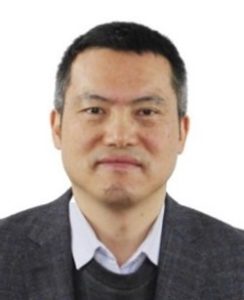 Guan-Wu Wang obtained his BS, MS and PhD degrees from Lanzhou University in 1987, 1990, 1993, respectively. He then did his postdoctoral work at Fudan University, Kyoto University, University of Kentucky, University of Chicago and Yale University. In May of 2000 he joined the University of Science and Technology of China as a full professor. His research interests include fullerene chemistry and mechanochemistry.
Guan-Wu Wang obtained his BS, MS and PhD degrees from Lanzhou University in 1987, 1990, 1993, respectively. He then did his postdoctoral work at Fudan University, Kyoto University, University of Kentucky, University of Chicago and Yale University. In May of 2000 he joined the University of Science and Technology of China as a full professor. His research interests include fullerene chemistry and mechanochemistry.










